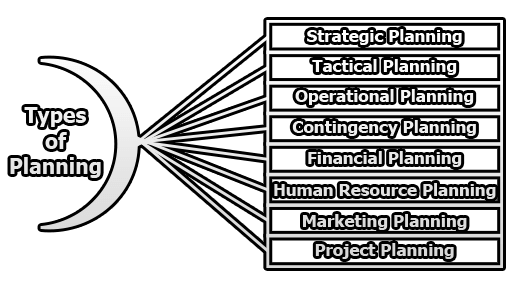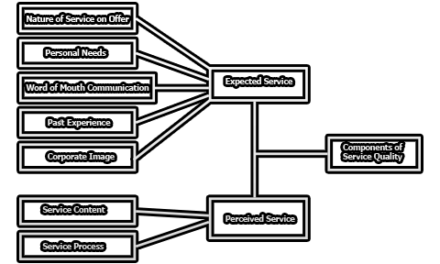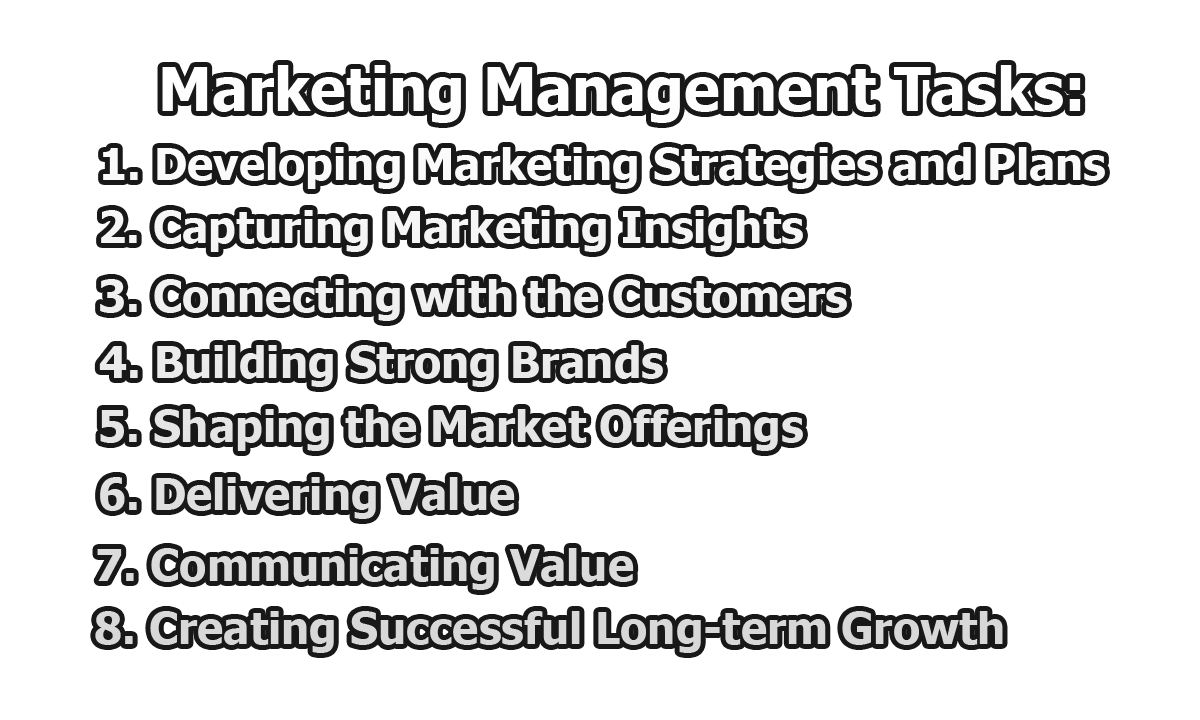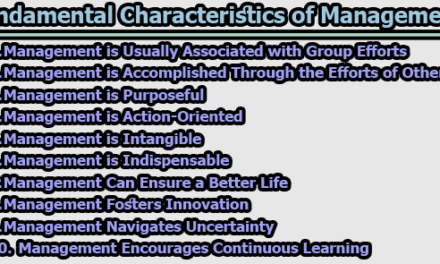Planning is the cornerstone of success, whether in the realm of business, personal endeavors, or any organized effort. It is a systematic and deliberate process that guides individuals and organizations in defining their goals, charting the course of action, and ensuring resources are allocated efficiently to achieve desired outcomes. Planning is not a one-size-fits-all concept; it encompasses various types, each serving distinct purposes. This holistic approach to decision-making is instrumental in providing direction, reducing uncertainty, and optimizing efficiency. In this discussion, we will delve into the nature of planning, explore its significance, and unravel the different types of planning that play pivotal roles in steering the course of success.
1. Nature of Planning:
1.1 Definition of Planning: Planning is a systematic and deliberate process of defining objectives and determining the most effective course of action to achieve those objectives. It is a forward-thinking activity that involves setting specific goals, developing strategies, and creating detailed plans to guide activities and allocate resources toward the desired outcomes. Planning is a multifaceted intellectual activity that requires critical thinking, analysis, and decision-making.
1.2 Characteristics of Planning: Some of the necessary characteristics are being:
1.2.1 Goal-Oriented: At its core, planning is centered around specific goals or objectives. These goals serve as the focal point of the planning process, providing a clear direction for what an organization or individual wants to achieve in the future. Without clear objectives, planning lacks purpose and direction.
1.2.2 Systematic Process: Planning follows a structured and systematic approach to achieve its objectives. It involves a series of well-defined steps and activities that ensure comprehensive coverage and thoughtful consideration of all relevant factors. This structured process helps in organizing thoughts and actions efficiently.
1.2.3 Forward-Looking: Planning is inherently future-oriented. It requires looking ahead and anticipating future conditions, challenges, and opportunities. By considering the future, planners can make proactive decisions and prepare for potential developments, minimizing the impact of uncertainty.
1.2.4 Continuous: Effective planning is not a one-time event but an ongoing process. The future is dynamic, and circumstances change over time. Therefore, planning requires regular review and adjustment to adapt to shifting conditions. Continuous planning ensures that objectives remain relevant and achievable.
1.2.5 Decision-Making Tool: Planning serves as a valuable framework for making informed decisions. It provides a structured platform for evaluating various alternatives, weighing their pros and cons, and selecting the most suitable course of action to achieve objectives. Without planning, decision-making can be haphazard and less effective.
1.2.6 Dynamic: Plans are not set in stone; they are dynamic and adaptable. As new information becomes available or circumstances change, plans can be adjusted and revised. This flexibility is essential to ensure that the planning process remains responsive to evolving conditions.
1.2.7 Involves Resource Allocation: Planning entails the allocation of resources to different tasks and activities. These resources can include time, money, manpower, equipment, and materials. Effective allocation ensures that resources are used efficiently and effectively to achieve planned objectives.
1.2.8 Involves Risk Assessment: A critical aspect of planning is the assessment of potential risks. Effective planning includes identifying and evaluating potential risks and uncertainties that could hinder the achievement of objectives. Strategies for mitigating these risks are developed to minimize their impact.
1.3 Purpose of Planning: The primary purposes of planning are as follows:
1.3.1 Setting Objectives: Planning helps in defining clear and measurable objectives that an organization or individual aims to achieve. Objectives provide a sense of purpose and direction, guiding efforts and resources toward specific outcomes.
1.3.2 Providing Direction: Planning provides a sense of direction to all members of an organization or individuals pursuing personal goals. It ensures that everyone understands the common objectives and the steps needed to reach them, fostering a cohesive and purpose-driven environment.
1.3.3 Minimizing Uncertainty: The future is inherently uncertain, but planning helps in reducing uncertainty. By anticipating future challenges and developing strategies to address them, planning allows organizations and individuals to prepare for unforeseen events and disruptions.
1.3.4 Enhancing Efficiency: Planning is a tool for enhancing efficiency. It ensures that resources are allocated in a manner that minimizes wastage and maximizes productivity. Well-planned tasks and activities are executed more smoothly and with fewer disruptions.
1.3.5 Facilitating Decision-Making: Planning serves as a framework for informed decision-making. It provides a structured process for evaluating alternatives and their potential outcomes, enabling individuals and organizations to make choices that align with their objectives.
1.4 Scope of Planning: The scope of planning can vary widely depending on the organization or individual and their specific goals. However, it generally includes the following aspects:
1.4.1 Time Frame: Planning can encompass various time frames, depending on the nature of the objectives. It can be short-term, focusing on immediate goals and actions, or long-term, spanning several years or even decades. Medium-term planning falls in between.
1.4.2 Functional Areas: Planning can extend to various functional areas within an organization, such as finance, marketing, operations, and human resources. Each area may have its own specific plans that contribute to the overall organizational goals.
1.4.3 Levels of Management: Planning is conducted at different levels of management within an organization:
- Strategic Planning occurs at the top level and focuses on long-term goals and the overall direction of the organization.
- Tactical Planning takes place at the middle level and involves translating strategic objectives into specific actions and plans for different departments or units.
- Operational Planning is carried out at the front-line management level and deals with day-to-day activities and the execution of higher-level plans.
1.4.4 Extent of Detail: The extent of detail in planning can vary widely. Plans can range from broad, high-level strategies that outline the general approach to achieving objectives to detailed, day-to-day action plans that specify tasks, responsibilities, and timelines in great detail.
1.4.5 Flexibility: Effective planning should allow for flexibility. Plans should be adaptable to changing circumstances and unforeseen events. This flexibility ensures that plans remain relevant and effective in dynamic environments.
2. Importance of Planning:
Effective planning is essential for the success and sustainability of organizations and individuals. The following are some key reasons highlighting the importance of planning:
2.1 Provides Direction: Planning provides clear direction and purpose. It sets specific objectives and outlines the path to achieve them. In organizations, this direction ensures that all employees understand their roles and responsibilities in working toward common goals. For individuals, planning offers a roadmap for personal development and achievement. Without planning, organizations and individuals may drift aimlessly, leading to confusion and inefficiency.
2.2 Reduces Uncertainty: The future is inherently uncertain, but planning helps mitigate this uncertainty. By anticipating potential challenges, risks, and opportunities, organizations and individuals can be better prepared to face unexpected events. Contingency planning, a subset of overall planning, helps in preparing for unforeseen circumstances. This proactive approach can significantly reduce the negative impact of unexpected disruptions.
2.3 Enhances Efficiency: Efficiency is a critical outcome of effective planning. It ensures that resources are allocated optimally. This includes the efficient use of time, money, manpower, equipment, and other resources. Well-planned tasks and activities are executed more smoothly and with fewer disruptions, leading to cost savings and improved productivity.
2.4 Facilitates Decision-Making: Planning provides a structured framework for informed decision-making. It presents various alternatives, their associated risks, and potential outcomes. This helps individuals and organizations make decisions that align with their objectives. Without planning, decision-making can become ad hoc, reactive, and prone to errors, potentially leading to poor choices.
2.5 Promotes Goal Achievement: Goals are the driving force behind planning. By setting clear and specific objectives, planning increases the likelihood of achieving those goals. It keeps individuals and organizations focused on what truly matters. Without planning, goals may remain vague and unattainable, leading to frustration and a lack of progress.
2.6 Encourages Innovation: Effective planning encourages creative thinking and innovation. It challenges individuals and organizations to find new and better ways of accomplishing objectives. Planning also allows for experimentation and the pursuit of novel ideas. By fostering an environment of innovation, planning helps organizations stay competitive and adapt to changing markets.
2.7 Allocates Resources Effectively: Resource allocation is a crucial aspect of planning. It ensures that limited resources are distributed to activities with the greatest impact on achieving objectives. Proper allocation prevents resource wastage and ensures optimal resource utilization. In organizations, this can lead to improved financial performance and a competitive edge. For individuals, effective resource allocation can lead to personal growth and success.
2.8 Ensures Accountability: Planning involves assigning responsibilities and deadlines for various tasks and activities. This promotes accountability at both the organizational and individual levels. When individuals and teams are held responsible for their contributions to the plan’s execution, they are more likely to meet their commitments. Accountability is essential for tracking progress, evaluating performance, and making necessary adjustments to stay on course.
3. Types of Planning:
Planning can take on various forms and serve different purposes. Here are some of the most common types of planning:
3.1 Strategic Planning: Strategic planning is a comprehensive and forward-looking process conducted by top-level management to chart the long-term course of an organization. It involves the following key elements:
- Mission Statement: The mission statement defines the organization’s core purpose and values. It serves as a guiding statement that communicates why the organization exists.
- Vision Statement: A vision statement outlines the desired future state of the organization. It provides a clear and inspirational picture of where the organization aims to be in the long run.
- SWOT Analysis: SWOT stands for Strengths, Weaknesses, Opportunities, and Threats. This analysis assesses the internal strengths and weaknesses of the organization as well as external opportunities and threats in the market or environment.
- Setting Objectives: Strategic planning involves setting specific and measurable long-term objectives. These objectives should align with the organization’s mission and vision.
- Developing Strategies: High-level strategies are devised to achieve the long-term objectives. These strategies outline the broad approaches the organization will take to reach its goals.
- Resource Allocation: Allocating resources effectively is crucial in strategic planning. This includes budgetary considerations, human resources, and other assets required to execute the chosen strategies.
- Monitoring Progress: Regular monitoring and evaluation are essential to ensure that the strategic plan remains on track. Adjustments may be needed as circumstances change.
Strategic planning often covers a horizon of three to five years or even longer, but it can vary depending on the organization’s industry and goals.
3.2 Tactical Planning: Tactical planning is the bridge between strategic planning and day-to-day operations. It is typically carried out by middle-level management and focuses on translating the broad objectives and strategies outlined in the strategic plan into specific actions for various departments or units within the organization. Here are more details:
- Specific Goals: Tactical plans define specific, measurable, and achievable goals for each department or unit. These goals are designed to contribute to the achievement of the organization’s strategic objectives.
- Resource Allocation: Tactical planning involves allocating resources and responsibilities within departments or units. This includes human resources, budgets, equipment, and other assets.
- Shorter Time Frame: Tactical plans usually cover a shorter time frame, often a year or less. This shorter time horizon allows for more detailed planning and execution.
- Coordination: Coordinating activities between different departments or units is a critical aspect of tactical planning. It ensures that everyone is working in harmony toward common objectives.
- Monitoring Progress: Regularly monitoring and reporting on progress toward tactical objectives is essential. This enables mid-level managers to make adjustments as needed to stay on track.
Tactical plans serve as a critical link between the strategic vision of top management and the day-to-day operations of the organization.
3.3 Operational Planning: Operational planning is the most detailed and specific level of planning. It is carried out by front-line managers and supervisors and focuses on the day-to-day activities required to implement the tactical plans. Here are the key components:
- Specific Tasks: Operational plans define specific tasks and activities that need to be completed to achieve tactical objectives. These plans outline the “who,” “what,” “when,” and “how” of daily operations.
- Short Time Frame: Operational plans cover a short time frame, often spanning only a few weeks or months. This time frame ensures that operations run smoothly in the near term.
- Resource Allocation: Allocating resources for daily operations is a fundamental part of operational planning. This includes assigning manpower, equipment, and materials as needed.
- Detailed Procedures: Operational plans include detailed procedures and guidelines for carrying out tasks. These procedures provide a step-by-step approach to ensure consistency and efficiency.
- Monitoring and Control: Continuously monitoring operations to ensure they align with the plan is vital. Front-line managers must maintain control and make real-time adjustments to meet objectives.
Operational planning ensures that the day-to-day activities of an organization are carried out effectively and efficiently in line with the broader strategic and tactical plans.
3.4 Contingency Planning: Contingency planning, also known as scenario planning or risk management planning, focuses on preparing for unexpected events or crises. It involves identifying potential risks and developing strategies to mitigate their impact. Here are the key aspects:
- Risk Assessment: Contingency planning begins with a thorough risk assessment. This involves identifying potential risks and vulnerabilities that could disrupt operations or objectives.
- Scenario Development: Contingency plans create different scenarios to anticipate potential crises. These scenarios help organizations prepare for a range of possible disruptions.
- Response Strategies: Developing plans and procedures for responding to crises is a critical aspect. Contingency plans outline how an organization will react and recover in the event of a crisis.
- Resource Allocation: Allocating resources for emergency situations is essential. This includes having reserves of manpower, equipment, and funds available for crisis response.
- Testing and Simulation: To ensure the effectiveness of contingency plans, organizations often conduct drills and simulations. This practice allows them to identify weaknesses and refine their crisis response strategies.
Contingency planning is essential for ensuring business continuity and minimizing the impact of unforeseen events, such as natural disasters, economic downturns, or security breaches.
3.5 Financial Planning: Financial planning involves managing an organization’s financial resources to achieve its goals. It encompasses a range of financial activities and considerations, including:
- Budgeting: Creating a detailed budget that outlines expected income and expenses. Budgets serve as financial roadmaps, helping organizations manage their resources effectively.
- Cash Flow Management: Ensuring adequate cash flow is critical for meeting financial obligations. Financial planning involves managing cash flow to maintain liquidity.
- Financial Forecasting: Predicting future financial trends and performance is essential for informed decision-making. This may include revenue projections, expense forecasts, and balance sheet predictions.
- Investment Planning: Deciding on investment strategies and asset allocation is part of financial planning. This involves making informed choices about where to allocate surplus funds for growth or income generation.
- Risk Management: Managing financial risks, such as currency exchange rates, interest rates, and market fluctuations, is a critical aspect of financial planning. Organizations develop strategies to mitigate these risks.
Financial planning is crucial for maintaining financial stability, achieving growth, and ensuring the long-term financial health of an organization.
3.6 Human Resource Planning: Human resource planning is focused on managing an organization’s workforce to meet its goals and objectives. It encompasses various activities related to personnel management, including:
- Workforce Analysis: Assessing current and future workforce needs is a foundational step. This analysis helps organizations understand the skills and resources required to achieve their objectives.
- Recruitment and Selection: Attracting and hiring qualified employees is crucial for building a capable workforce. Human resource planning includes strategies for recruitment and selection.
- Training and Development: Providing training and development opportunities for employees is essential for enhancing skills and performance. This also includes succession planning to identify and groom future leaders.
- Succession Planning: Identifying and preparing future leaders within the organization is a key part of human resource planning. It ensures that leadership transitions are smooth and that the organization retains institutional knowledge.
- Performance Appraisal: Evaluating employee performance and providing feedback is vital for maintaining high productivity and motivation among the workforce.
Human resource planning ensures that an organization has the right people with the right skills in the right positions to achieve its objectives.
3.7 Marketing Planning: Marketing planning is all about developing strategies and tactics to promote products or services and meet customer needs. It is a comprehensive process that includes:
- Market Research: Gathering data on customer preferences, market trends, and competitor activities is a foundational step in marketing planning. This research informs decision-making.
- Product Development: Creating and improving products or services to meet customer demands and stay competitive is central to marketing planning.
- Pricing Strategies: Setting prices that align with market demand and competition is an essential consideration. Pricing strategies can significantly impact an organization’s revenue and market positioning.
- Distribution Planning: Determining how products will reach customers involves decisions about distribution channels, logistics, and supply chain management.
- Promotion and Advertising: Developing marketing campaigns, advertising strategies, and promotional activities is a crucial aspect of marketing planning. These efforts aim to attract and retain customers.
Marketing planning is essential for building brand awareness, expanding market share, and achieving sales and revenue targets.
3.8 Project Planning: Project planning is specific to the execution of a particular project, whether it’s a construction project, software development, or event planning. It involves the following key elements:
- Project Scope: Defining the project’s objectives and deliverables is the starting point. This clarifies what needs to be achieved.
- Work Breakdown Structure: Breaking the project into manageable tasks and subtasks helps in organizing and assigning work effectively.
- Project Schedule: Creating a timeline with deadlines for each task ensures that the project stays on track and is completed within the planned timeframe.
- Resource Allocation: Assigning personnel, equipment, and other resources to the project is essential for resource management.
- Risk Assessment: Identifying potential risks and developing risk mitigation strategies is a critical part of project planning. It helps prevent and manage project delays or failures.
Project planning ensures that projects are completed successfully, within budget, and according to the specified scope and quality standards. It is a fundamental process for project management.
In conclusion, in the grand tapestry of life, planning emerges as the intricate thread that weaves purpose, direction, and efficiency into our endeavors. Its nature as a systematic, goal-oriented process empowers us to navigate the unpredictable future with confidence. As we’ve uncovered the importance of planning, it is evident that it serves as the compass guiding organizations and individuals toward their aspirations, reducing the impact of uncertainties, and ensuring the efficient allocation of resources. Furthermore, our exploration into the various types of planning underscores the versatility and adaptability of this fundamental practice, showcasing how it can be tailored to diverse contexts. In essence, planning is not merely a concept; it is a dynamic force that propels us toward our dreams, helping us chart our path and arrive at our desired destinations.

Former Student at Rajshahi University










